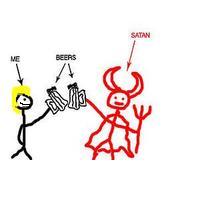Here is a timeline of the French Revolution to aide in enjoyment of Anatole France's The Gods Will Have Blood. Mainly taken from Wikipedia.
· 1774: Louis XVI’s coronation
· 1789: Robespierre is elected to the Estates-General at the age of 30 and moves to Versailles.
· July 14, 1789: Bastille Day
· August 26, 1789: National Constituent Assembly publishes Declaration of the Rights of Man (proposed by Lafayette)
· October 5-6, 1789: Women’s March/October Revolution. The Royal Family is forced out of Versailles by an angry mob. They move to the Tuileries, escorted by Lafayette.
· July 12, 1790: The Civil Constitution of the Clergy makes all clergy employees of the state. By November, all clergy must swear an oath of loyalty to this. The Pope does not like it.
· July 17, 1791: Champ de Mars Massacre. A crowd gathers to protest the National Assembly’s decision to create a constitutional monarchy. Between 12 and 50 people are killed by royalist troops under command of Lafayette.
· August 27, 1791: Declaration of Pillnitz. The Holy Roman Emperor Leopold II and Frederick William II of Prussia call on European powers to intervene if Louis XVI’s life is endangered.
· September 13-14, 1791: Louis XVI formally accepts constitution
· September 30, 1791: Dissolution of National Constituent Assembly
· October 1, 1791: Legislative Assembly meets for the first time with many young and inexperienced members.
· March, 1792: Guillotine adopted as means of execution
· April 20, 1792: France declares war on Austria.
· April 25, 1792: First use of guillotine.
· April 28, 1792: France invades Belgium (Austrian Netherlands)
· July 30, 1792: Austria and Prussia begin invasion of France.
· August 10, 1792: Paris Commune uprising. Royal family arrested. End of the Bourbon monarchy in France until the 1814 restoration.
· August 19, 1792: Lafayette flees France, surrenders to Austria
· August 22, 1792: royalist riots in Brittany, La Vendée and Dauphiné.
· September, 1792: half of the Paris prison population is massacred. Many are clergy. Marie Antoinette’s close friend the Princess de Lamballe is torn apart by an angry mob.
· September 22, 1792: first day of the Revolutionary Calendar (Napoleon will officially abolish in 1806)
· 1793: The first Bourbon king, Henry IV’s, tomb is ransacked and his corpse is decapitated (it was reinterred with his body this year.)
· January 21, 1793: execution of Louis XVI
· March 11, 1793: establishment of Revolutionary Tribunal, the court that try political offenders during the Reign of Terror.
· April 6, 1793: Committee of Public Safety established. This will be France’s de facto government during the Reign of Terror
· June 10, 1793: Jacobins gain control of the Committee of Public Safety
· July 13, 1793: Marat assassinated
· July 17, 1793: Charlotte Corday executed
· July 27, 1793: Robespierre, a Jacobin, is elected to Committee of Public Safety
· September 5, 1793: Reign of Terror begins
· October 16, 1793: Marie Antoinette executed
· October 21, 1793: a law is passed that allows execution of priests and their supporters on sight
· October 31, 1793: 21 former Girondist leaders executed
· March 24, 1794: Jacques Hebert, the editor of the radical left newspaper La Pere Duchesne, is executed for criticizing Robespierre for being too moderate
· April
5, 1794: Georges Danton executed
· May 7, 1794: Robespierre launches his new religion, The Cult of the Supreme Being
· May 8, 1794: Antoine Lavoisier executed
· July 27-28, 1794: The Thermidorian Reaction. Robespierre is arrested and guillotined without trial, along with other members of the Committee of Public Safety. Ironically, the end of the committee makes the public more safe. The Reign of Terror officially ends.
· 1799: Napoleon becomes First Consul of France
· May 18, 1804: Napoleon crowned Emperor of France
· April 6, 1814: Bourbon Restoration of Louis XVIII (Louis XVI’s younger brother)
· March 20, 1815: Beginning of Napoleon’s 100 Days; Louis XVIII flees France
· June, 1815: following defeat at Waterloo, Napoleon surrenders and is exiled from France for the second time to St. Helena where he will die in 1821. Louis XVIII returns to the throne.








